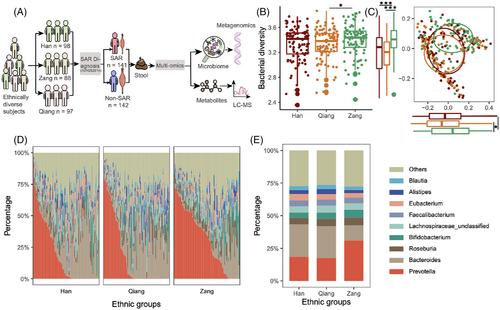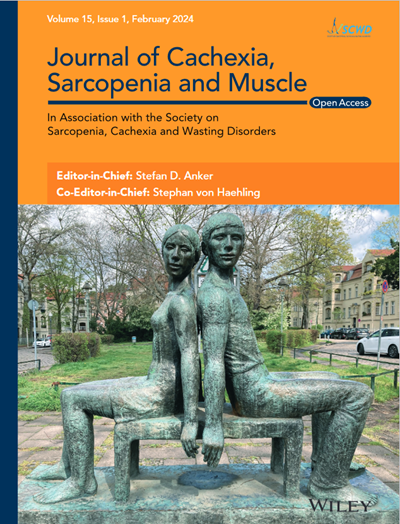The gut microbiome and fecal metabolites have been found to influence sarcopenia, but whether there are potential bacteria that can alleviate sarcopenia has been under-investigated, and the molecular mechanism remains unclear.
To investigate the relationships between the gut microbiome, fecal metabolites and sarcopenia, subjects were selected from observational multi-ethnic study conducted in Western China. Sarcopenia was diagnosed according to the criteria of the Asian Working Group for Sarcopenia 2014. The gut microbiome was profiled by shotgun metagenomic sequencing. Untargeted metabolomic analysis was performed to analyse the differences in fecal metabolites. We investigated bacterium with the greatest relative abundance difference between healthy individuals and sarcopenia patients, and the differences in metabolites associated with the bacteria, to verify its effects on muscle mass and function in a mouse model.
The study included 283 participants (68.90% females, mean age: 66.66 years old) with and without sarcopenia (141 and 142 participants, respectively) and from the Han (98 participants), Zang (88 participants) and Qiang (97 participants) ethnic groups. This showed an overall reduction (15.03% vs. 20.77%, P = 0.01) of Prevotella copri between the sarcopenia and non-sarcopenia subjects across the three ethnic groups. Functional characterization of the differential bacteria showed enrichment (odds ratio = 15.97, P = 0.0068) in branched chain amino acid (BCAA) metabolism in non-sarcopenia group. A total of 13 BCAA and their derivatives have relatively low levels in sarcopenia. In the in vivo experiment, we found that the blood BCAA level was higher in the mice gavaged with live P. copri (LPC) (P < 0.001). The LPC mice had significantly longer wire and grid hanging time (P < 0.02), longer time on rotor (P = 0.0001) and larger grip strength (P < 0.0001), indicating better muscle function. The weight of gastrocnemius mass and rectus femoris mass (P < 0.05) was higher in LPC mice. The micro-computed tomography showed a larger leg area (P = 0.0031), and a small animal analyser showed a higher lean mass ratio in LPC mice (P = 0.0157), indicating higher muscle mass.
The results indicated that there were lower levels of both P. copri and BCAA in sarcopenia individuals. In vivo experiments, gavage with LPC could attenuate muscle mass and function decline, indicating alleviating sarcopenia. This suggested that P. copri may play a therapeutic potential role in the management of sarcopenia.



